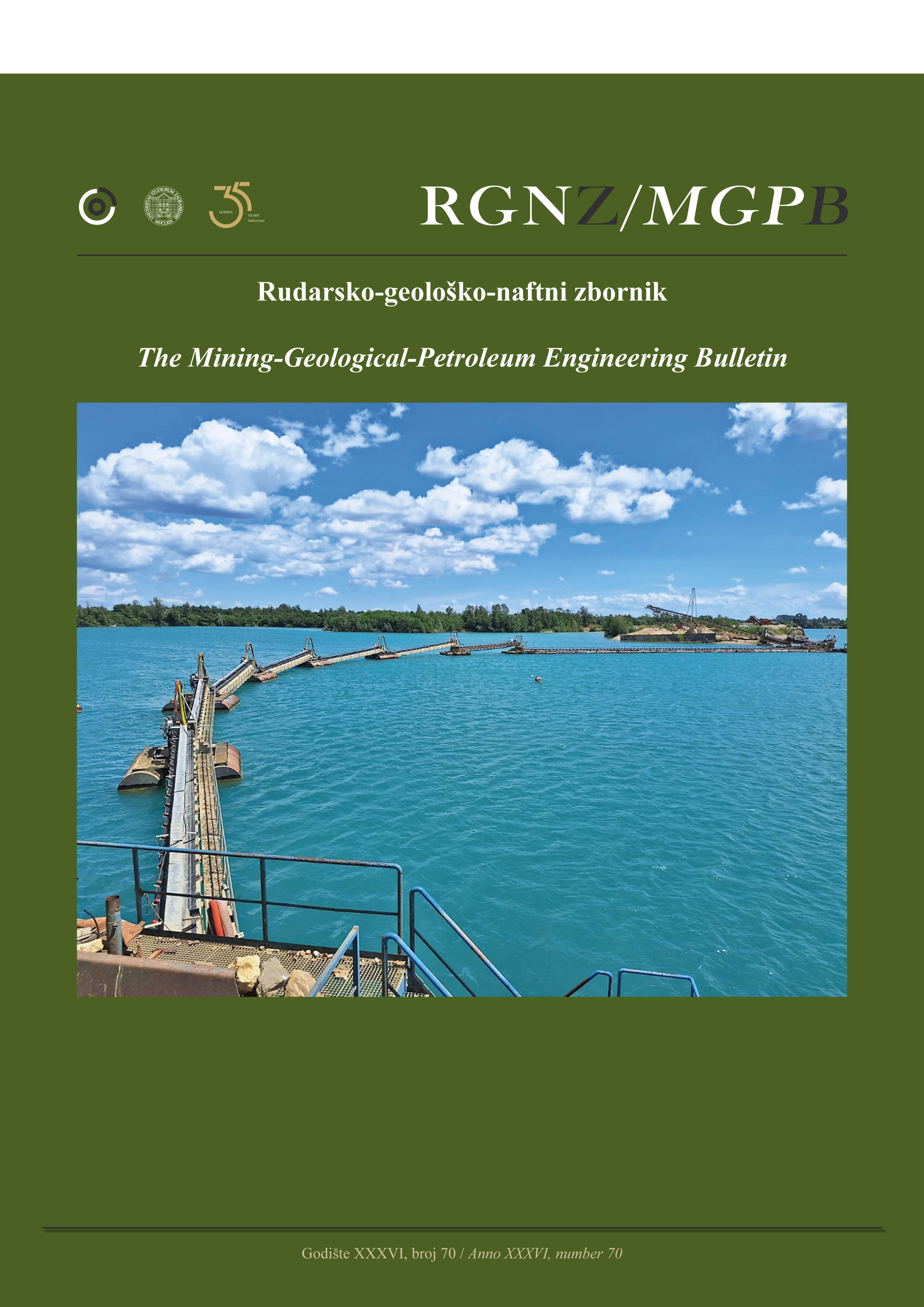Selection of the optimal technology to prevent sand production, taking into account rock deconsolidation in the bottomhole formation zone
DOI:
https://doi.org/10.17794/rgn.2024.4.9Keywords:
productive reservoir, weakly consolidated formation, sanding, proppant, fracturingAbstract
This article presents studies on the selection of the best sand control option, technologically based on the application of the method of fixing the bottomhole part of the well system with polymerized proppant, which will prevent the destruction of the formation zone of the wells and facilitate the development of the Kumkol field in the future. During the development of the Kumkol field, the main and most complicating factor in the operation of wells is sand production, leading to long downtime and repairs. The aim of the study is to scientifically substantiate and improve the technological methods of fixing the bottomhole zone of the well system to exclude or limit sand production with the well production of the Kumkol field, taking into account the current state of the reservoir rocks. The work applied a set of research methods, including: analysis of the experience of combating sand ingress at the Kumkol field; the use of the theoretical foundations of the relationship between the methods of anti-sand filtration and the properties of reservoir rocks; mathematical experiments on the constructed geological and mathematical model of the current state of the rocks of the decompacted zone. The scientific novelty of the work lies in the establishment of patterns that relate the impact of the destruction of reservoir rocks with a weakly cemented property in a production well on the degree of formation of deconsolidation zones at the bottom of wells that reveal a weakly cemented rock formation.
Downloads
Published
How to Cite
Issue
Section
License
Copyright (c) 2024 Larisa Churikova, Samal Akhmetzhan, Gali Gumarov, Ainash Mukambetkaliyeva, Kumiskali Gubaidullin

This work is licensed under a Creative Commons Attribution 4.0 International License.
Creative Commons-BY
Authors who publish with this journal agree to the following terms:
In agreeing this form, you certify that:
- You read the ethical codex of the RGN zbornik available at journal web.
- You submitted work is your original work, and has not previously been published and does not include any form of plagiarism.
- You own copyright in the submitted work, and are therefore permitted to assign the licence to publish to RGN zbornik.
- Your submitted work contains no violation of any existing copyright or other third party right or any material of an obscene, libellous or otherwise unlawful nature.
- You have obtained permission for and acknowledged the source of any illustrations, diagrams or other material included in the work of which you are not the copyright owner.
- You have taken due care to ensure the accuracy of the work, and that, to the best of your knowledge, there are no false statements made within it.
- All co-authors of this submitted work are aware of, and in agreement with, the terms of this licence and that the submitted manuscript has been approved by these authors.
Publication licence
You retain copyright in your submitted work, according to journal license policy (CC-BY). By signing this form you agree that RGN zbornik may publish it under the publication licence. In summary the licence allows the following:
Anyone is free:
- To copy, distribute, display, and perform the work.
- To make derivative works.
Under the following conditions:
- The original author must always be given credit.
- The work may not be used for commercial purposes.
- If the work is altered, transformed, or built upon, the resulting work may only be distributed under a licence identical to this one.
Exceptions to the licence
In addition to publishing the work printed under the above licence, RGN zbornik will also enable the work to be visible online.
The journal editorial can change the licence rules anytime but it cannot retroactively restrict author(s) rights.


